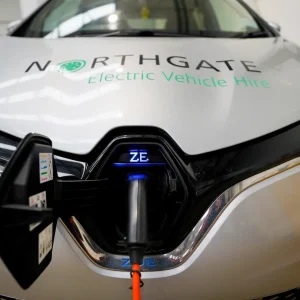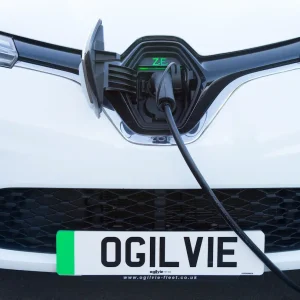Hayes is quick to point out that last year’s sales were impacted by supply. Plus, in the fleet market, lead times are often the key decision-making point. He says: “With a supplier footprint that is more eastern based, it has taken us a little longer to recover the production that thankfully is coming back on stream this year. What that hasn’t done though surprisingly, is dent demand. So, coming out of last year we held a record order bank, but no doubt we may have missed some fleet opportunities along the way.
“That said, going forward, we hold a very healthy order bank in key fleet channels for NX hybrid and NX Plug-in. NX Plug-in has been particularly well-received by consumers in both retail and fleet markets and picked up a couple of awards. What’s exciting for me, is now that we’re here discussing the RZ launch, we now have a product range which for the first time addresses a wider fleet market proposition. So, the fastest growing part of the premium market in the UK is SUV, in the small, medium, and large SUV segments. C, D, and E now for us will contain four body types, UX, NX, RX and now RZ, with eight powertrains, of which two are plug-in and two electric. I think that now gives us a credible product offering for fleet user choosers, fleet managers and small businesses alike, taking advantage of Benefit in Kind (BiK) with the taxation benefits of plug-in for example.
“Going forward, we certainly see a meaningful proportion of our volume in growth coming from the fleet market and fleet channels. Our volume cruising altitude over the last five to six years has been around the 10-15,000 mark. On an annual basis we’ll do that in a sustained, thoughtful, and consistent way – particularly in the fleet market. Total Cost of Ownership is of paramount importance to all customers, whether it’s retail or fleet, and we recognise the importance of residual values and that will inform our channel management strategy. We’re committed to the fleet market, and we now have a product line-up that will enable us to do that.”
According to Hayes, the first and early Lexus RZ orders have been predominantly retail, but their planning mix going forward is a 60:40 fleet and retail split. He says: “Of course we never really know. That’s our initial estimate, but what we are seeing from the very first orders, is that we have previous Lexus owners who have left the brand to
other premium brands, that have EV powertrains, coming back. Certainly, as we go through the launch period, we expect demand to settle down, and within that segment it’s going to be pretty close to the segment average, which is going to be 55%/45% – slightly in favour of fleet.
“From a fleet perspective it will be interesting to see the mix between the 18in and 20in wheels – depending on the requirements from user choosers and fleet managers. Our current order bank demand is 90% top two grades, that’s made up of 60% top Takumi grade and 40% Premium Plus. On an ongoing basis, we will probably have 20-30% in the Premium trim with the 18in wheels. We will have to monitor carefully to see how the market responds.”
Hayes is excited that the RZ gives Lexus in the UK, the chance to conquest. He says: “I’m really excited by the possibilities. The Lexus EV Sport Concept is the pinnacle direction, of our product planning future. Along with that, comes the leader of EV technology within TMC (Toyota Motor Corporation). I think those ingredients together, give us a chance to really appeal to new audiences. Either who have been with us and left, or those that have never actually owned or experienced a Lexus. That sort of conquest appeal, I think will come through. We’re certainly seeing that so far this year.
“Interestingly, in some of our marketing communication activities, our recent UX campaign, has widely received a very positive response, drawing in new customers. I dare say, from a brand perspective, we are looking at leveraging those innovation credentials and becoming a much younger, and more progressive brand as we go forward that resonates with a more contemporary UK consumer. I think that gives us a great opportunity.”
Hayes identifies two particular areas of focus, that Lexus is most keen on within fleet. He says: “The first is our localisation programme, where we have recently restructured our internal corporate/fleet operations. We are moving into a space selling not just vehicles, but finance, servicing, maintenance, repair, and fleet management solutions – a much more 360-degree approach to the fleet market. Which is of course what consumers are looking for – they don’t want to talk to multiple people, just to run their own fleet. So, that’s certainly one area of focus for us.
“The second is the Kinto brand, and how we see that shift from ownership to usership. Generally, in the marketplace, that will manifest itself in new, innovative ownership and usership solutions. Whether that’s subscription-based, or shared services, it will be interesting in the long run to see how that transition happens. We see Lexus as being very much at the forefront of some of those new usership experiences.
“When we look at the current developments of the Kinto proposition, we’re in the pilot phase and working through platforms on the operations side. As we come through the second half of this year, some of those new solutions start to become live. Of course, our existing business contract hire proposition with Kinto is live in the market today, as a fully maintained fleet services proposition. So, of course that foundation is already well in place, in partnership with our dealer network and then we’ll use this year to prepare the platform processes and operation for some of the newer subscription-sharing services that come later.”





